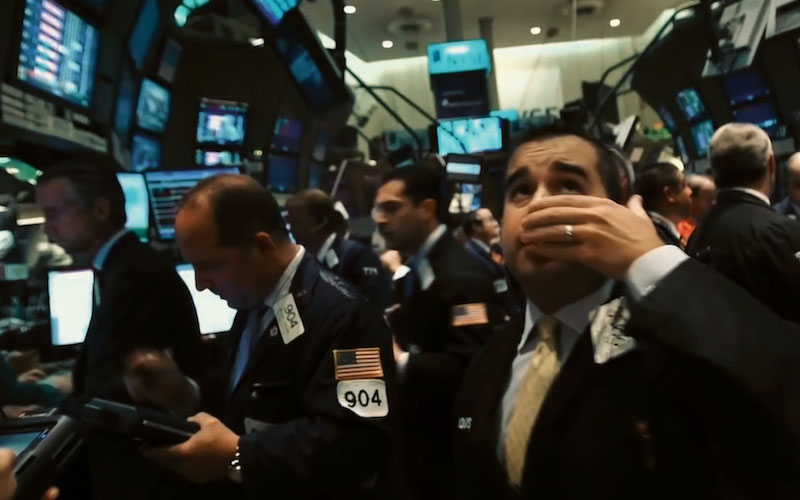After the Fed's rate cut, there was a surprise reversal! US Treasury yields rose instead of falling, and the US dollar soared!
2025-09-19 10:18:55

The driving force behind the rise in U.S. Treasury yields
24 hours after the Federal Reserve cut interest rates by 25 basis points, U.S. Treasury yields rose significantly and the yield curve steepened, which also revealed the nature of this round of "hawkish interest rate cuts."
Thursday's jobless claims and Philadelphia Fed data (both of which showed a solid economy) pushed yield expectations higher, and the tone of the U.S. stock market's closing session after the Fed's decision also contributed to the move.
Trading activity in Asia and Europe had previously pulled Treasury yields back from a potential high of 4.1%. However, with the US trading session dominating the market (especially after the data release), the high was finally reached, marking the first consecutive days of gains since early September and the largest two-day gain in a month.
Despite the rate cut, unemployment claims and Philadelphia Fed data both exceeded expectations. Coupled with the Fed's failure to signal a more dovish stance, the market immediately repriced the yield path. Short-term U.S. Treasury yields climbed, increasing the appeal of U.S. dollar assets .
The latest U.S. Treasury International Capital Flows (TIC) report shows modest net inflows of approximately $2 billion in U.S. securities. Specifically, China reduced its holdings by $25 billion, while Japan reduced its holdings by $26 billion, a trend that has persisted in both countries in recent years. Brazil, India, and Belgium (a custodial center) also saw net sales of securities. Canada led the way with $57 billion in net sales, suggesting a reversal of the massive sell-off in April in May.
On the other hand, the UK was a significant buyer, with $43 billion invested, as were several European financial centers, the UAE, Hong Kong, and South Korea. Excluding China and Japan, all other foreign investors netted $54 billion. Over the past 12 months, US foreign investors have averaged $61 billion per month in purchases, while US domestic funds have averaged $134 billion per month.
Overall, although the July data was not impressive, it continued the trend of US securities receiving reasonable support, which provided potential support for US Treasuries. However, the data only reflects the flow of funds as of the end of July and is not timely enough to explain the recent price trends.
The long end is still facing steepening pressure, but market interpretation is becoming more complicated
The German 10-year and 30-year government bond yield curves and the UK 10-year and 30-year government bond yield curves both steepened due to the funding schedule update and the Bank of England's quantitative tightening announcement, respectively.
Overall, these events have not provided the respite some had hoped for for ultra-long bonds. Governments continue to issue long-term bonds, and the potential impact of a slowdown in quantitative tightening programs does not appear to be changing this trend.
Germany is skewing its €10.5 billion increase toward long-term bonds, with 15- and 30-year bonds accounting for 33% of the nominal increase. In terms of the risk the market needs to factor in, this translates to a 58% bias in long-term bonds.
The Bank of England, broadly as expected, announced plans to reduce its gilt holdings by £70 billion over the next 12 months. While active sales of bonds maturing 20 years and longer were scaled back, as widely expected, they did not completely cease as some market participants had hoped.
The upward resonance of long-term yields suppressed non-US currencies, especially the Japanese yen and the euro, which were under obvious pressure, indirectly boosting the strength of the US dollar.
That said, given US macroeconomic developments, the discussion of further yield curve steepening may be less straightforward. More recently, Dutch pension funds may increase hedging during the transition, while demand for fixed-rate recipients may also rise due to inflation indexation. Meanwhile, yield curve steepening trades (partly driven by expectations of pension fund unwinding in 2026) have already created crowded positions, potentially amplifying adverse fluctuations.
US Dollar Index Verification
Following the announcement of the rate cut, the US dollar index briefly fell to 96.21, its lowest level since February 2022. However, Powell's speech quickly reversed the downward trend, and the index subsequently rose by over 1%, securing two consecutive days of gains. In Asian trading on Friday, the US dollar index continued its rebound, currently trading around 97.45, up about 0.1%. The market is reconsidering the Fed's approach of "cutting interest rates without loosening financial conditions," and the US dollar liquidity premium has continued to widen.

(Daily chart of the US dollar index, source: Yihuitong)
At 10:17 Beijing time, the US dollar index is currently at 97.45.
- Risk Warning and Disclaimer
- The market involves risk, and trading may not be suitable for all investors. This article is for reference only and does not constitute personal investment advice, nor does it take into account certain users’ specific investment objectives, financial situation, or other needs. Any investment decisions made based on this information are at your own risk.





















